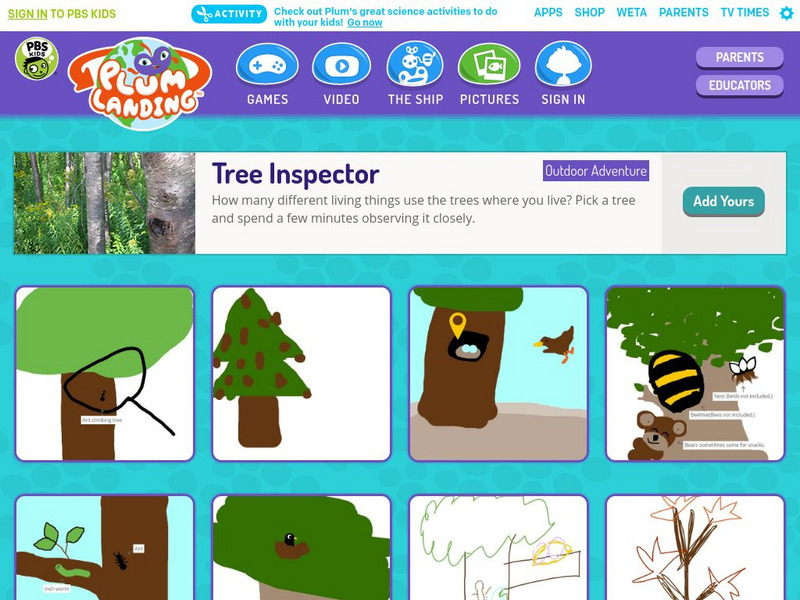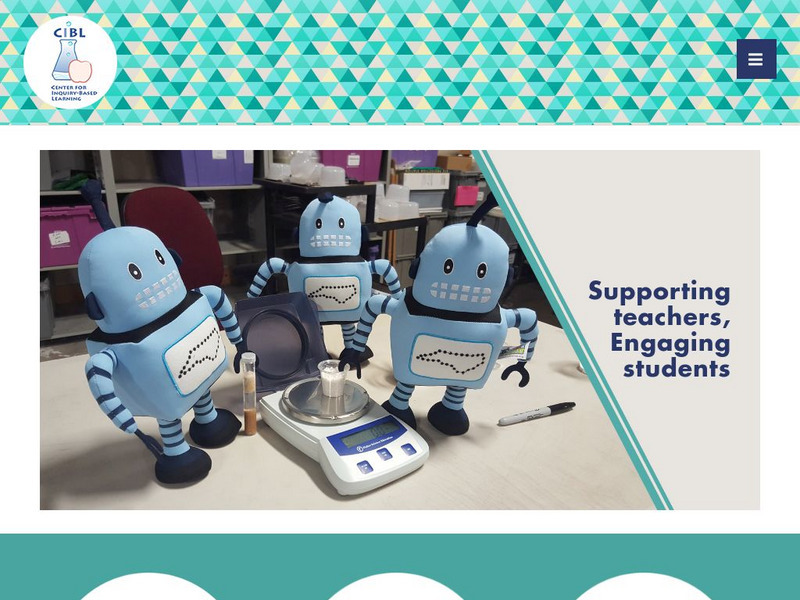Curated OER
Add & Subtract with Hudson River Shipping
In this shipping on the Hudson River learning exercise, middle schoolers record information about types of vessels seen on the Hudson River and respond to the questions that follow about each. Then they identify the Alice Oldendorff...
Curated OER
Scientific Thinking
Young scholars participate in four different activities which reinforce an understanding of they way scientists think about the world. They make careful observations of two different pennies, write the procedure for making a peanut...
Curated OER
Examining Spectra
High schoolers examine the spectra with the use of light while constructing their own spectroscope. They make observations about the colors and visible wavelengths of light and then conduct classroom discussions. As an extension students...
Curated OER
Geography for Life: Using Five Skills
Young scholars use the five skills of geography to reflect on a favorite learning activity. They consider if the activity had all five skills and if it didn't what could have been done to include those that weren't in it. The five...
Curated OER
The Five Senses - Observation, Experimentation, Prediction, and Categorization.
First graders engage in this creative and well-designed lesson. They rotate through five learning stations, each devoted to one of the senses. They practice observation, experimentation, prediction, and categorization.
Curated OER
Scientific Method for Middle Schools
Pupils use the scientific method to solve a teacher scenario. They bring in M&M's. Students are given a copy of the scientific method. They first come up with a problem. Pupils are told that they are going to conduct an experiment on...
Curated OER
Fossil Evidence
Students evaluate each other's fossil imprints and they try to identify the original object. They comprehend the importance of accuracy in identifying a fossil imprint. Students create an answer sheet that has space for the names of the...
Curated OER
Shapes, Shapes Everywhere!
Sixth graders investigate the geometric concept of shapes. They locate shapes in their immediate environment and label them according to basic shape. The shapes that are found are recorded by the teacher on chart paper and any...
Curated OER
Investigation 4 - Plot Studies
Third graders use a plot map to study the plants and animals living in a small area of their environment.
Science Education Resource Center at Carleton College
Serc: Investigating South Crow River: Discharge, Turbidity, Erosion, Sediments
For this field investigation, small groups of students will observe and measure characteristics of the South Crow River near Mayer, Minnesota. Data collection on these characteristics will include but not be limited to: speed of current...
Science Education Resource Center at Carleton College
Serc: Our Big Backyard
An activity for students to fine tune their observation skills using their senses in their own backyard. During this activity, students will record their observation to compare and contrast living things over a period of different seasons.
Utah Education Network
Uen: Enlightening Explorations, Part Ii
This lesson engages students in learning about light. Studets will describe how light is produced, reflected, refracted, and separated.
Utah Education Network
Uen: Chances With Wolves
This lesson engages students in learning the differences among observations, facts, and inferences. Students will study about the reintroduction of wolves into the Rocky Mountain and Yellowstone Region. Students will work in small groups...
Better Lesson
Better Lesson: Our Stars
In this lesson, students will observe and communicate how the stars are in the sky both day and night. The extremely detailed lesson includes photos and videos of the lesson in actions, examples of student's work, materials, parent...
University of Illinois
University of Illinois Urbana Champaign: Chickscope: The Journey Begins
Journey with the chicken egg, from formation to hatching, and learn about its embryology.
Cynthia J. O'Hora
Mrs. O's House: Mystery Object Challenge
With a brief story and photo of an image, students will do some digging to figure out how old the object pictured is and the history behind it.
PBS
Pbs Kids: Plum Landing: Tree Inspector
This PBS Kids activity is an extension of a Plum Landing episode featuring trees. Students will use the online tools to draw a tree that they closely observe.
Other
Duke: Center for Inquiry Based Learning
Duke University has established the Center for Inquiry-Based Learning. It serves to enhance math and science lessons. Click on Resources for good examples of Inquiry-based lesson plans.
ABCya
Ab Cya: Easter Egg Hunt
Easter Egg Hunt is fun holiday activity for kids of all ages. The object of this Easter activity is to simply find the hidden eggs. Look carefully at the pictures and use the mouse to click on the eggs to collect them. These Easter Eggs...
ReadWriteThink
Read Write Think: Digging Up Details on Worms: Using Science in an Inquiry Study
A lesson plan based on a study unit of earthworms, using the inquiry model to integrate scientific processes with literacy practices. Instruction plans, related resources, and standards are included.
Alabama Learning Exchange
Alex: Creepy Caterpillars to Beautiful Butterflies
Students will explore the life cycle of a butterfly using a website and observations of caterpillar metamorphosis. This lesson will incorporate science, mathematics, language arts, and art.
Alabama Learning Exchange
Alex: Butterfly Life Cycles
This unit introduces students to a study of life cycles by having them examine the life cycle of a butterfly. The students will observe, record and describe the changes in caterpillars as they become butterflies. The teacher will...
BBC
Bbc Bitesize Revision: Observation
As part of a revision and writing section of BBC Bitesize, this site goes over several tips of general advice to keep in mind when writing about observations (as part of descriptive writing).
HotChalk
Hot Chalk: Lesson Plans Page: Sink or Float?
This lesson plan is designed to have young children explore the concept of sinking vs. floating by using the skills of prediction, observation and classification.

























